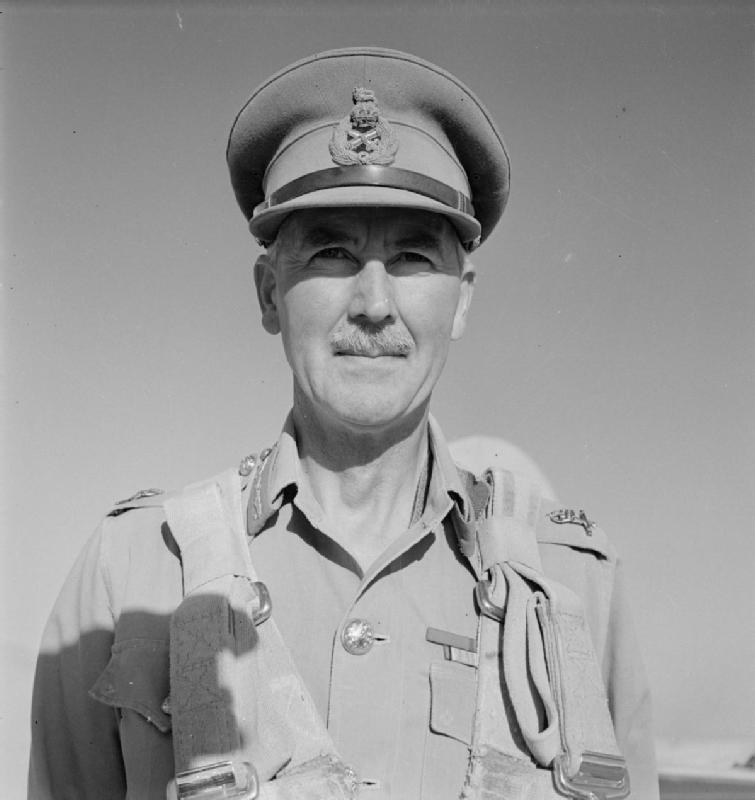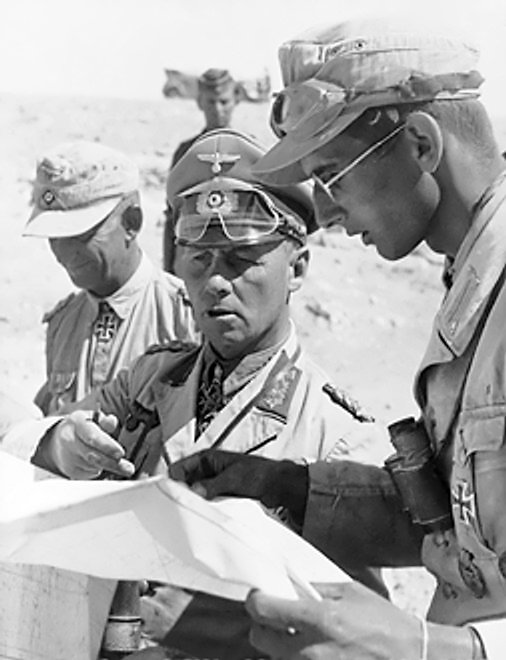Civil War Echoes: The Desert War II
A charismatic general fights for an extended period in one theater against the same force under a succession of generals. Despite being outnumbered and often under-supplied, he manages to win a series of spectacular victories that capture the world’s attention and push his opponents to the brink of strategic despair and defeat. In the end, new champions arrive from other theaters and finally defeat this general and his army. Nonetheless, this general remains the object of interest and admiration to the present day.
Robert E. Lee versus the Army of the Potomac from 1862 to 1865? No, Erwin Rommel versus the Eighth Army in North Africa from February 1941 to February 1943.
If that sounds very similar to the story of Lee and the Army of the Potomac, that is because it is. In my previous post, I explored a few echoes of the Civil War in the desert. But there is more: In certain broad ways, the Civil War in Virginia and the Desert War mirror each other.
Like the Civil War in Virginia pivoting on the area between Washington and Richmond, the Desert War turned on geographic poles. The Desert War centered on the 900 miles between El Agheila and El Alamein, 60 miles west of the main British base at Alexandria. In width, the area of battle extended up to 200+ miles into the desert at times. Here’s a map:
The Desert War also ebbed and flowed like the campaigns of the Army of the Potomac and the Army of Northern Virginia. After an Italian invasion of Egypt from Libya, a lighting British campaign under Richard O’Connor pushed the Italians back to El Agheila, where in the spring of 1941 they were joined by Rommel and the first of his two panzer (armored) divisions. (O’Connor’s campaign was the last time the Axis forces would outnumber the British in the desert.) Rommel went on the offensive, within weeks securing the port of Benghazi, driving the British back to the Halfaya area along the Egyptian frontier, and isolating a strong British force in Tobruk. A British counteroffensive in July (Operation Battleaxe) failed to reverse these gains. General Sir Claude Auchinleck took over from Archibald Wavell as Middle East Commander in Cairo.
In September 1941 General Sir Alan Cunningham took command of the Western Desert Force, now named Eighth Army. Under pressure from London, he launched Operation Crusader in late November. The offensive started poorly, and Cunningham was relieved after counseling retreat to Auchinleck. Neil Ritchie, Auchinleck’s Deputy Chief of Staff, took command. After a series of fierce tank battles, Rommel withdrew in the first week of December 1941. The siege of Tobruk was raised after 241 days, and Ritchie’s forces pushed Rommel back to El Agheila, where the Axis received supplies and reinforcements. Rommel went back on the offensive in late January 1942, and by early February 1942 both sides reached stalemate around the Gazala-Bir Hacheim position west of Tobruk.
Both Rommel and Ritchie planned attacks at Gazala, but Rommel moved faster. In late May he flanked the Eighth Army and smashed part of its armor. Ritchie’s counterattacks were fierce but piecemeal, and after two weeks of fighting the Eighth Army was on the brink of defeat. Ritchie withdrew, and Tobruk fell on June 21. Rommel captured large quantities of British supplies, which enabled him to press the attack into Egypt. Auchinleck took personal command of the defense, and stopped Rommel at El Alamein in July. (The U.S. Army’s official history of the North African campaign referred to the El Alamein actions collectively as “the Gettysburg of the war in North Africa.”) However, Churchill had lost confidence in Auchinleck; in mid-August Harold Alexander replaced him in Cairo and Bernard Law Montgomery took command of Eighth Army. Both men came from London and had not fought in the desert before.
Like U.S. Grant discovered at the Wilderness with the Army of the Potomac (“You people seem to think Lee can do a double somersault . . .”) “Alex” and “Monty” found an army in awe of its opponent; at this time, anything positive in Eighth Army was called “doing a Rommel.” Montgomery reorganized Eighth Army and brought in senior leaders from the outside. Army morale improved after a defensive victory at Alam Halfa in early September, and in a two-week battle (23 October-4 November 1942) Montgomery defeated Rommel and forced him onto a long retreat over 1,500 miles to Tunisia.
Like the Army of the Potomac against Lee, Eighth Army (and the Western Desert Force before it) fought Rommel under a succession of commanders: Richard O’Connor, Archibald Wavell, Noel Beresford-Peirse, Alan Cunningham, Neil Ritchie, and Claude Auchinleck. They met with some successes but more often defeat, and were unable to establish superiority over Rommel. Viewed from London, these back-and-forth battles caused angst in the government – not unlike how the Committee on the Conduct of the War viewed the Army of the Potomac’s operations in 1862 and 1863.
The Eighth Army also had doctrinal problems with how to best deploy and use its armor – much like the Army of the Potomac and its cavalry. Many British tanks had been designed for infantry support, while the army’s two main armored divisions (1st and 7th) often operated in dispersed brigades and without central tactical control. This meant the armor was often deployed piecemeal and was outdone by its Axis counterparts on the battlefield. Only after Montgomery’s arrival were the armored units reinforced and organized into an armored corps – the X Armored Corps, which under Herbert Lumsden played a key role in the Battle of El Alamein and pursuit to Tunisia.
Today, Erwin Rommel’s desert war is studied and admired by modern militaries – including his former adversaries. Many people see him as an honorable warrior and great leader who was a master of mobile warfare. Robert E. Lee occupies a similar place in the pantheon of great battlefield captains since 1800. Their stories and lessons are very much analogous.
In the end, why do these stories captivate so? One answer is because of the stakes involved. But more than that, they touch on two of the great traditions in Western literature: the champion doing battle and the underdog facing great odds and yet prevailing again and again.
Bottom Left: Claude Auchinleck in 1941.
Bottom Right: Alan Cunningham during Operation Crusader.
Far Bottom Left: Rommel and staff in the summer of 1942.
Far Bottom Right: Neil Ritchie (with pipe) meets with senior leaders during the Battle of Gazala.





Excellent read many thanks
You’re most welcome. Glad you enjoyed it!
I suppose these similarities explain why my favorite wargaming subjects were the Civil War and the North Africa campaign of WW2 😉
You didn’t play Avalon Hill’s Afrika Corps did you? That wasn’t their best game.
I did, actually. It wasn’t bad, but the Combat Results Table left a lot to be desired. As I recall, it was one of their earlier titles.
I remember that the Germans were tasked with taking four points, including El Alamein. All the British commander had to do was pile up his forces in an unbeatable defensive formation and he would win the game. The amount of the map readily available for campaigning was also relatively small.
There’s a new downloadable game on the Alamein battles:
http://www.coatneyhistory.com/BattlesForAlamein.htm